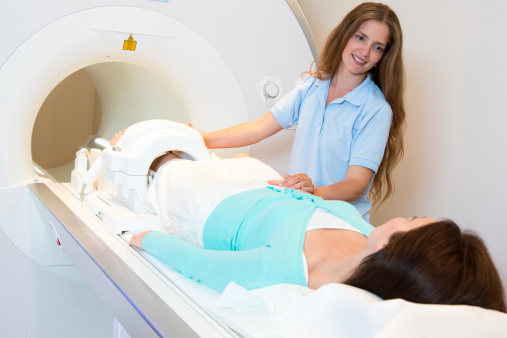MRI Can Help You Get the Best Cervical Cancer Treatment

Cervical cancer is the third-most common gynecological cancer in the U.S. and the second-most common one in the world. An annual Pap test (also called a Pap smear) is an excellent way to detect pre-cancerous cells that may lead to cervical cancer; the Centers for Disease Control (CDC) recommends that all women aged 21 to 65 get this exam.
While cervical cancer can be deadly, it typically progresses slowly from a pre-cancerous stage to cancer contained in the cervix, to invasive cancer (cancer that has spread beyond the cervix). When it is caught before it becomes invasive, it is almost always curable. Most cervical cancer is associated with human papillomavirus (HPV).
If your pap smear finds pre-cancerous tissue, your doctor may recommend MRI or CT for further evaluation. MRI, which uses radiowaves and a magnetic field, not radiation, to create images of the soft tissues of the body is especially useful to evaluate cervical cancer prior to receiving any treatment and helps to determine what “stage” your cancer is in. It is an excellent tool for determining the size of a tumor and whether the disease has extended into other areas such as the bladder or rectum. A recent study even suggests that MRI may help distinguish between endometrial and cervical cancer more accurately than a biopsy. MRI also can determine if your lymph nodes have been affected.
Women should get an annual pap smear; if cervical cancer is detected, they should talk with their doctor about the value of MRI or CT to get the best possible diagnosis and care. MRI may also be helpful in determining how you are responding to treatment and in determining if cervical cancer has recurred.
Call Community Radiology Associates at 888-601-0943 for more information or to make an appointment.
Learn more about our Women's Health Imaging Services.

